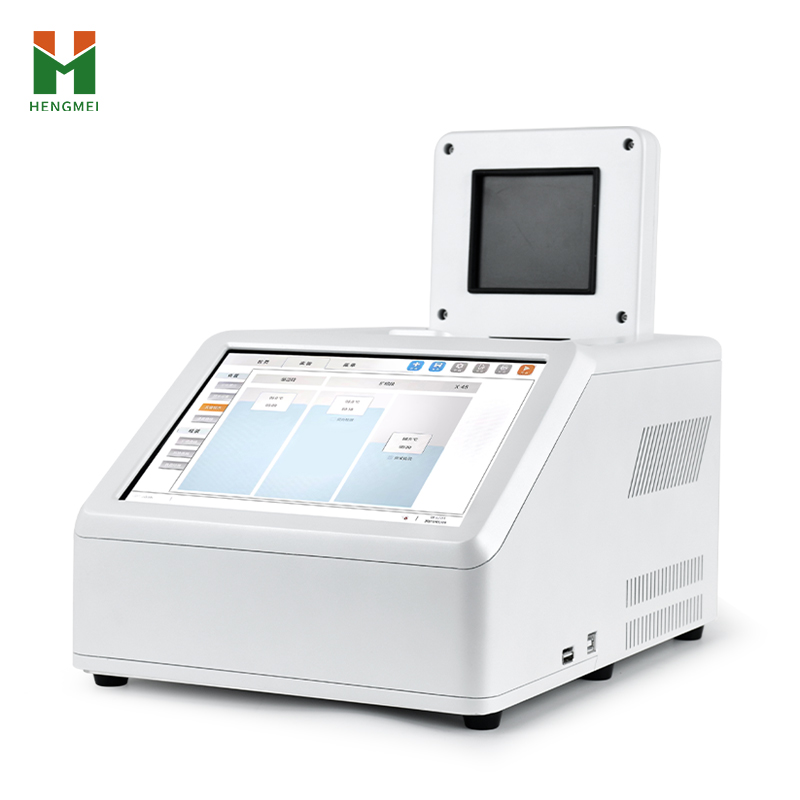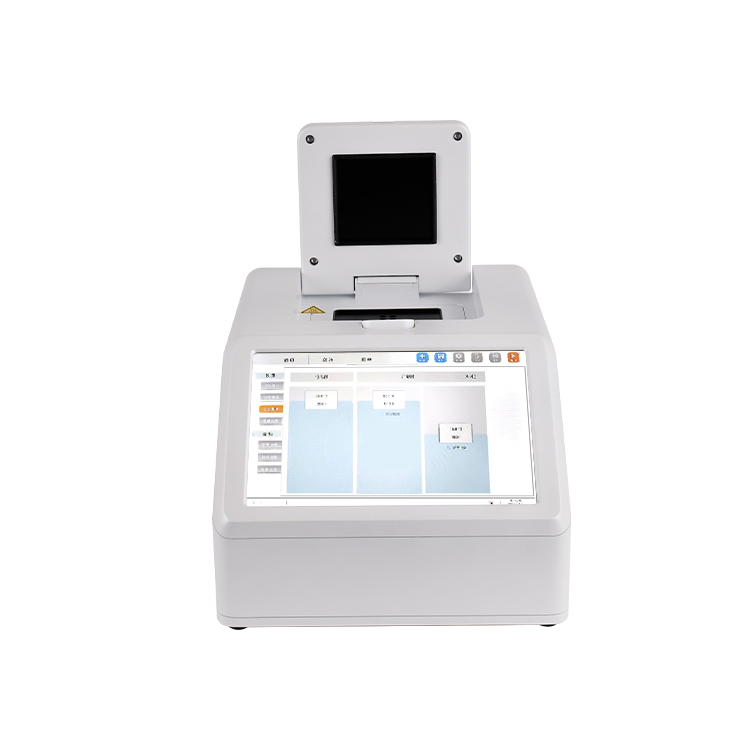The rapid development of molecular diagnostic technology has placed higher demands on pathogen detection and genetic analysis. Although traditional PCR technology can achieve DNA amplification, it cannot perform real-time quantitative analysis. The emergence of the real-time fluorescence quantitative PCR instrument has perfectly solved this technical challenge, enabling rapid and accurate quantitative analysis of target nucleic acids, making it an indispensable tool in modern molecular biology research.

Equipment Overview
The real-time fluorescence quantitative PCR instrument is an advanced molecular diagnostic device used to conduct real-time fluorescence quantitative PCR experiments. Through its fluorescence excitation and acquisition system, the instrument monitors the experimental process in real time, converts experimental data into fluorescence curves, displays them in real time on the instrument interface, and performs data fitting analysis, ultimately generating professional PDF format experimental reports. It not only enables precise quantitative analysis of target nucleic acids in biological samples but also supports advanced analysis functions such as standard curves, melting curves, and genotyping.
Working Principle
1.Principle of Real-Time Fluorescence Quantitative PCR Technology
The real-time fluorescence quantitative PCR instrument is based on polymerase chain reaction (PCR) technology. By introducing fluorescent dyes or labeled probes, it monitors changes in fluorescence signals in real time during the PCR process. The core technologies include:
•Utilizing fluorescent chemicals to monitor the total product after each PCR cycle
•Employing internal or external reference methods for quantitative analysis of specific DNA sequences
•Achieving a technological leap from qualitative to quantitative analysis
2.Instrument Structure Composition
The system primarily consists of four core components:
•Gene amplification thermal cycling system: Uses semiconductor heating and cooling technology
•Real-time fluorescence detection system: Includes fluorescence excitation and signal detection components
•Microcircuit control system: Ensures precise temperature control and signal acquisition
•Computer and application software: Responsible for data analysis and result output
Technical Advantages
1. High Sensitivity and Specificity
Capable of detecting extremely low levels of target nucleic acids with sensitivity at the copy number level, while ensuring high detection specificity and effectively avoiding false-positive results.
2. Real-Time Quantitative Capability
Compared to traditional PCR, its greatest advantage lies in its ability to monitor the amplification process in real time, enabling true quantitative analysis rather than endpoint detection.
3. High-Throughput Detection
Supports multi-channel fluorescence detection, allowing simultaneous analysis of multiple target genes, greatly improving detection efficiency and meeting high-throughput screening needs.
4. High Degree of Automation
Fully automated from sample processing to result analysis, reducing human operational errors and ensuring the reproducibility and accuracy of experimental results.
Application Fields
The real-time fluorescence quantitative PCR instrument plays a vital role in multiple fields:
1. Clinical Diagnostics
•Rapid pathogen detection: Qualitative and quantitative analysis of viruses, bacteria, and other pathogens
•Disease marker detection: Analysis of tumor markers and genetic disease-related gene expression
2. Food Safety
•Detection of foodborne pathogens: Rapid screening of Salmonella, E. coli, etc.
•GMO component detection: Qualitative and quantitative analysis of genetically modified components in agricultural products
•Authenticity identification of meat products: Species origin identification and adulteration detection
3. Scientific Research
•Gene expression analysis: Quantitative study of mRNA expression levels
•Single nucleotide polymorphism (SNP) analysis: Genotyping and mutation detection
•Microbiological research: Analysis of environmental microbial communities
4. Epidemic Prevention and Control
•Animal epidemic monitoring: Rapid detection of avian influenza, African swine fever, etc.
•Response to emerging infectious diseases: Screening of pathogens such as the novel coronavirus
Industry Challenges and Solutions
1. Insufficient Detection Sensitivity
Traditional methods cannot detect low-copy-number targets.
Solution: The real-time fluorescence quantitative PCR instrument offers extremely high sensitivity, capable of detecting single-copy nucleic acid molecules.
2. Inaccurate Quantitative Results
Endpoint PCR cannot achieve precise quantification.
Solution: Real-time fluorescence monitoring ensures quantitative accuracy.
3. Limited Detection Throughput
Traditional methods have limited sample processing capacity.
Solution: Multi-well plate design supports high-throughput detection.
4. Complex and Time-Consuming Operations
Manual operations involve numerous steps and are prone to errors.
Solution: Automated processes reduce human intervention.
The real-time fluorescence quantitative PCR instrument, as a core technology platform in the field of molecular diagnostics, has become an essential tool for modern life science research and high-throughput molecular diagnostics due to its high sensitivity, precise quantification, and high efficiency. This instrument not only addresses multiple technical bottlenecks of traditional detection methods but also provides more comprehensive solutions for disease diagnosis, food safety, and scientific research.
Article address:https://www.molecularbio.cn/news/43.html













